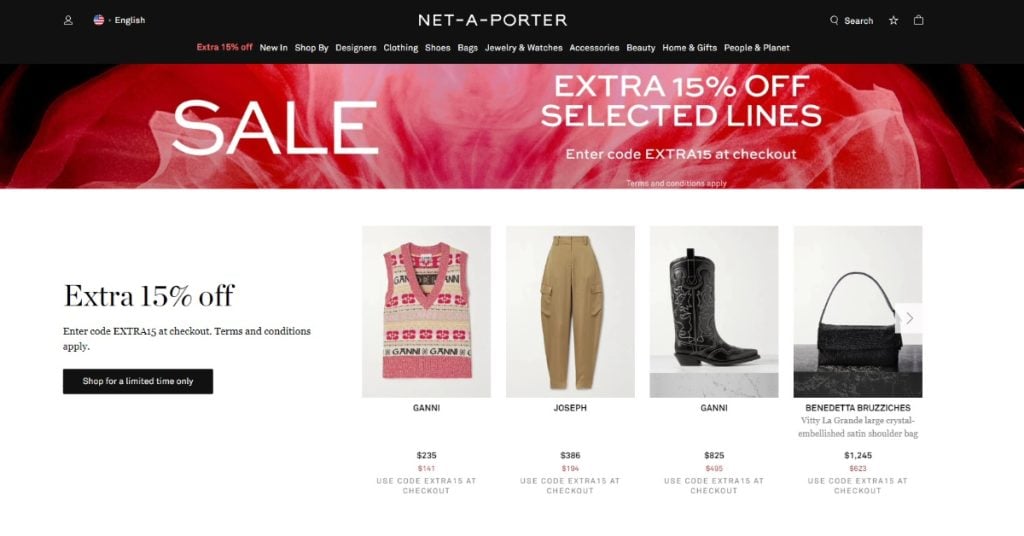
Net-a-porter marketplace case study: book a demo to start yours
Net-a-porter, an upscale online fashion retailer, provides a carefully curated assortment of designer apparel, accessories, and beauty items tailored for women. If you’d like to start your own marketplace like Net-a-porter, you’re facing a buy vs build decision. So before you decide to build it in-house on top of Spree open-source, consider using the feature-rich Enterprise Edition cutting your time-to-market to a few weeks.
Build vs Buy a marketplace?
Utilizing open-source technology offers considerable advantages like full control and customization options. However, these benefits come with high costs. Creating a complete marketplace solution can take a long time, often months or years, and involves substantial financial investment, as evidenced by numerous marketplace projects.
If speed and reliability are your priorities, choosing a pre-built, enterprise-ready solution like Spree Commerce Enterprise Edition is the practical path backed by the experience of those who know how unpredictable and risky custom marketplace development can be.
Back to the Net-a-porter marketplace case study
Net-a-Porter, a pioneer in luxury goods e-commerce, celebrated its 20th anniversary last year. Initially a dominant force in online luxury shopping, its influence has waned as competitors like Farfetch and Mytheresa emerged.
A significant strategic shift occurred with Prada’s drop shipping deal, moving Net-a-Porter from a traditional wholesale model to a commission-based one. This change reflects a broader industry trend towards brand empowerment and reduced dependency on multi-brand retailers.
Marketplace growth remains robust, with their share of luxury sales estimated to rise to 14% by 2023, up from 6% in 2019. Concurrently, luxury brands like Gucci and Prada are increasingly selling directly to consumers, with their own channels contributing up to 90% of sales.
This shift has eroded Net-a-Porter’s market dominance and impacted its parent company Richemont’s profitability, pushing it towards collaborations with rivals like Farfetch and a shift towards a hybrid model integrating marketplace features.
Another notable trend is brands taking e-commerce operations in-house. For instance, Moncler ended its e-commerce relationship with Net-a-Porter to manage this strategic asset independently, aiming to double its e-commerce sales by 2023. This move exemplifies the growing preference of luxury brands to control their digital presence and customer relationships directly.
How to emulate Net-a-porter marketplace success?
For a success similar to Net-a-porter’s, you might want to start your marketplace within weeks, not months. It’s important to see if your product catalog is what your audience is looking for and to modify your ways of attracting customers based on real results.
Test the market before you decide to fully build it yourself.
Here’s how to get started:
- Book a marketplace demo call: We’ll help you evaluate Spree for your marketplace needs and get started with the Enterprise Edition
- Customize your Storefront: Use the drag & drop page builder or custom CSS
- Onboard Brands: Invite your brands or choose brands from our catalog
- Select Products: Curate products and collections manually or automate it
- Embed products: Make your content, newsletters, social media shoppable
- Get Paid: Get paid as soon as products are shipped by the brands
- End-to-end automation: brands sync, fulfillment, payouts, invoicing, taxes
When you’ve tried all that and it works, start thinking about building your own, custom-made marketplace project based on Spree Commerce. First, by decoupling the storefront and going headless with marketplace API, and later with your own backend, if you decide you really need it. Just lift and shift the storefront.
Nobody has to know what’s under the hood, right?



